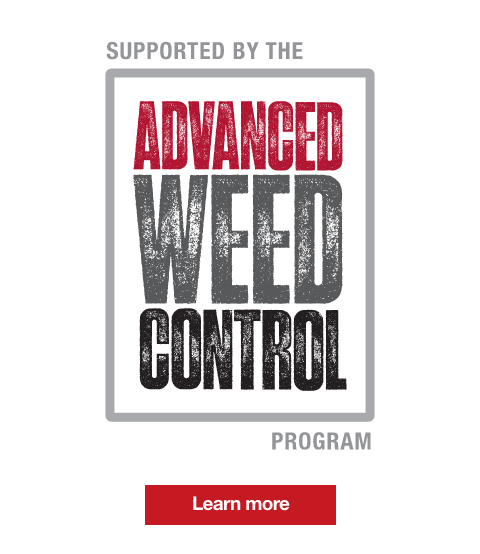Zidua SC
Group 15
Residual control of key annual grasses and broadleaf weeds.
- Group 15 chemistry delivers control of tough weeds, including resistant redroot pigweed and green and yellow foxtail
- Residual activity controls germinating weed seedlings before or soon after crop emergence
- Wide window of application from early pre-plant to early post-emergence and post-harvest
Applicable On

Field Corn
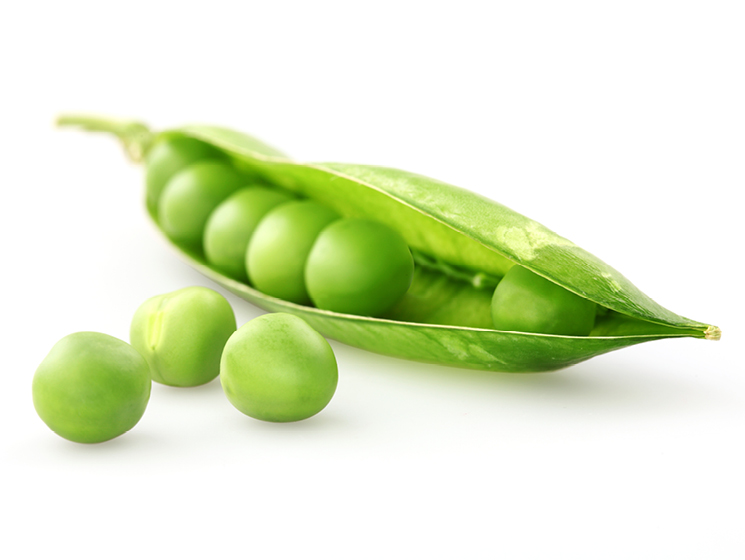
Field Peas
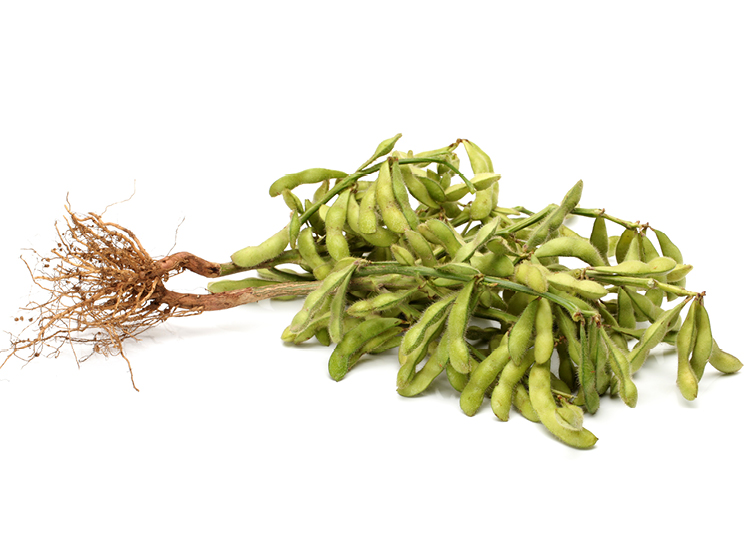
Soybeans

Lentils

Potatoes
Labels & SDS
Voraxor Complete Decision Tree
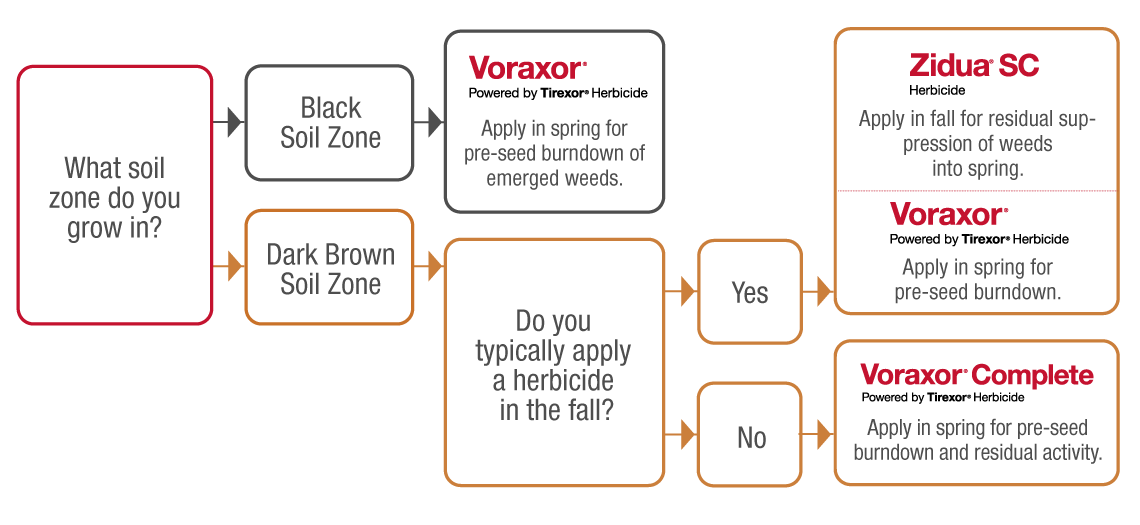
Infographic
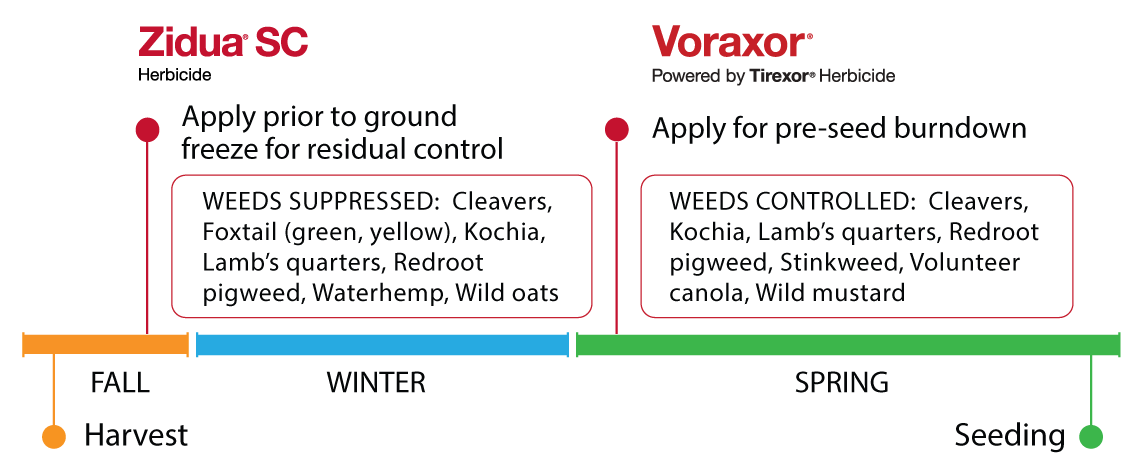
Benefits of Zidua SC
- The residual activity of this Group 15 active provides consistent control of grass and broadleaf weeds, with flexible application timing
- Requires rainfall to go into solution to then be taken up by the roots and shoots of germinating weeds before or shortly after emergence
Product Info & Application Guide
Weed Management
Weed class |
Weeds controlled/suppressed |
|---|---|
Broadleafs – prior to emergence |
Cleavers1 Common chickweed1 Eastern black nightshade1 Kochia1 Lamb’s quarters1 Palmer amaranth Redroot pigweed1,2 Shepherd’s-purse1 Waterhemp1,2 Wild buckwheat1 |
Grasses – prior to emergence |
Annual bluegrass3 Barnyard grass2 Crabgrass (large)2 Downey brome1 Foxtail (giant2, green1,2, yellow1,2) Japanese brome1 Ryegrass (Italian)2 Wild oats1 |
1 Early-season residual suppression only.
2 Controlled at 101 to 200 ml/ac (250 to 493 ml/ha).
3 Provides control when applied as a post-harvest treatment prior to weed emergence.
Application Tips
Restricted entry interval – 12 hours.
- Minimum seed depth is 2.5 cm for chickpeas, corn, field peas and lentils, and 4 cm for soybeans.
- A minimum of 2 inches of soil covering the vegetative portion of potato plants following drag-off or hilling is required.
- Zidua SC must be applied and activated by moisture prior to weed emergence. When adequate moisture is not received after Zidua SC application, weed control may be improved by irrigation (except flood irrigation).
- Do not use on peat or muck soils with 7% or more organic matter content.
- Do not apply more than 1 application of Zidua SC per season.
Grazing
- Do not feed or graze treated hay or forage to livestock.
When to Apply
Application or crop |
Staging |
|---|---|
Chickpeas |
pre-seed, pre-emergence |
Field corn |
pre-seed3, pre-emergence, early post-emergence up to 4 leaf |
Faba beans, field peas |
pre-seed, pre-emergence |
Herbicide-tolerant soybeans4 |
pre-seed3, pre-emergence, early post-emergence up to 3rd trifoliate |
Lentils |
pre-seed, pre-emergence, fall prior to seeding |
Sunflowers |
pre-seed3, pre-emergence |
Potatoes |
pre-emergence (after planting or following drag-off or hilling) |
Post-harvest |
after harvest |
3 Up to 30 days before seeding.
4 Talk to your grain buyer before applying to conventional or IP soybeans.
How Much to Apply
One case of Zidua® SC herbicide will treat 40 to 165 acres.
| Crop | Rate by soil texture for residual control | Recommended acres/case |
|||
|---|---|---|---|---|---|
Residual control |
|||||
| Coarse | Medium-fine | Fine | |||
| Organic matter ≤ 3% | 3% ‹ Organic matter ‹ 7% | ||||
Field corn (pre-plant, pre-emerge, early post-emerge) or herbicide-tolerant soybeans (pre-plant, pre-emerge) |
101 ml/ac (250 ml/ha) |
134 ml/ac (332 ml/ha) |
169 ml/ac (417 ml/ha) |
200 ml/ac (493 ml/ha) |
40 to 80 |
Post-harvest application |
49 to 97 ml/ac (120 to 240 ml/ha)6 | 83 to 165 | |||
Early-season residual suppression7 |
|||||
Herbicide-tolerant soybeans (early post-emerge) |
73 ml/ac (180 ml/ha) | 110 | |||
Chickpeas, dry field peas, potatoes, sunflowers |
49 to 97 ml/ac (120 to 240 ml/ha) | 83 to 165 | |||
Lentils |
49 to 73 ml/ac (120 to 180 ml/ha) | 110 to 165 | |||
Fall application |
|||||
Chickpeas, dry field peas, lentils |
73 to 97 ml/ac (180 to 240 ml/ha) | 83 to 110 | |||
6 Application rates are for all soil types. Use the higher rate for longer residual and under heavier weed populations.
7 When an in-crop application of another registered herbicide is planned.
Water volume
Ground application only |
40 L/ac (10 gal/ac) |
Mixing order
Add products separately. Do not mix multiple products at the same time.
- Use a 50 mesh filter screen and fill clean tank ½ to ¾ full of water.
- Add water conditioners if needed.
- Add a Wettable powder or water dispersible granular (WG) tank-mix partner if applicable.
- Agitate.8
- Add a Micro-encapsulated (ME) tank-mix partner if applicable.
- Add the required amount of Zidua SC herbicide.
- Add a Liquid, solution or suspension tank-mix partner if applicable.
- Add an Emulsifiable concentrate (EC) tank-mix partner if applicable.
- Add Glyphosate if needed.
- Add any Surfactants or adjuvants if required.
- Fill the remainder of the tank with water. If the solution is left for an extended period of time, agitate once every 8 hours before spraying again.
Note: A detergent-based cleaning solution should be used before changing over to a different chemistry.
8 Do not over-agitate at any point in the process.
Tank Mixes
Herbicides for field peas and lentils: Glyphosate9,10, Heat® LQ11, Voraxor®11
Herbicides for chickpeas: Glyphosate9,10, Heat LQ11
Herbicides for corn: Aatrex® Liquid 480, Armezon®, glyphosate9, Heat LQ11
Herbicides for soybeans: Engenia®, glyphosate9, Heat LQ11
Herbicide for sunflowers: Glyphosate9
Herbicide for potatoes: Glyphosate
Herbicides for post-harvest application: Engenia, glyphosate9
9 Glyphosate present as isopropylamine salt, di-ammonium salt or potassium salt.
10 Can be applied in fall to lentils.
11 Pre-seed or pre-emergence only.



